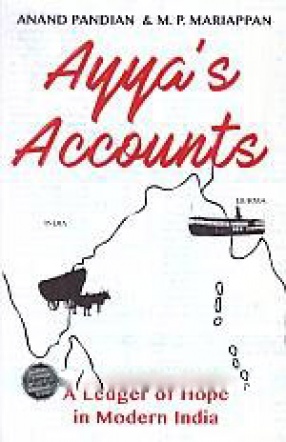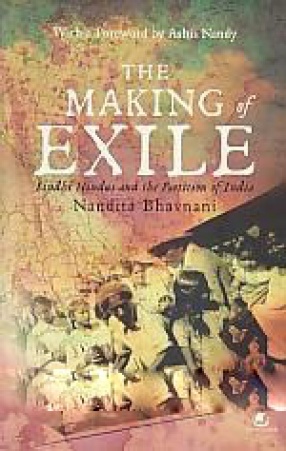
Tranquebar Press

54 books












Krishan Chander’s Urdu novel, Ghaddaar meaning ‘traitor’, begins with a delicately woven romance between an unmarried Muslim girl, and her married Hindu lover. But the world outside is being torn asunder and Krishan Chander shows how love, brotherhood and humanity swiftly turn into redundant emotions, as permanent lines are drawn between two nations.
Traitor .... a word that acquires a new meaning and a sharper edge in the times we live in, ...



Haroon Khalid's lifelong fascination with Guru Nanak was reignited when he came upon Baburbani, a poem written by the saint. This, and the discovery that Guru Nanak spent a large part of his life in Pakistan, inspired Khalid to undertake a journey that he hoped would help him learn more about the revered founder of Sikhism.In this wonderful paean to Guru Nanak, Khalid describes his travels across the length and breadth of Pakistan as he visits the many gurdwaras ...

He is the Mahatma, a man the world venerates as a prophet of peace. But for Kastur, the child bride who married the boy next door, Mohandas was a sexually-driven, self-righteous, and overbearing husband.
Mohandas Karamchand Gandhi was sworn to poverty, celibacy and the cause for India’s freedom; Kastur spent sixty-two years of her life, juggling the roles of a devoted wife, a satyagrahi and sacrificing mother, who was eclipsed because of a man who almost ...

India, 1904. The young and dashing Sultan Kowaishi has just returned from London to Bombay after passing his barrister exam. Among the first persons he meets is Mohammed Ali Jinnah, already an advocate of note, and is quickly drawn to him. It is also the time when Jinnah decides to join the Indian National Congress, soon to become its brightest star. The stir against the British rule holds no interest for Sultan but it attracts his wife Rehana, and, inexorably, ...


I want sukh (peace) Won t you give me sukh? asked a middle-aged Shanti who witnessed the death of her three sons, one of them an infant, and her husband in a house lit with kerosene by marauding mobs; Dr Swaranpreet heard the woman in silence. She claimed the police had inserted a stick inside her... Swaranpreet realised that she had been cruelly violated; He spoke a single sentence but repeated it twice in chaste Punjabi: Please give me a turban? I want nothing ...

A solo motorcycle ride across India, and into Bhutan, becomes much more than just a test of physical endurance when 57-year-old, Pune-based, speech therapist Ajit Harisinghani decides to go in the pursuit of that most elusive of all human desires -Happiness. With the idea of Bhutan s Gross National Happiness on his mind, he traverses a potpourri of terrain; riding through landscapes that change daily. From arid land to verdant fields, from jungles with glimpses ...

A European arrives in India and comes upon an ancient mythical instrument. This instrument, the Ravanhattha, is not only the earliest ancestor of the western violin, but was also, according to the early versions of the Ramayana, invented by the Great Demon King, Ravana.Who exactly was Ravana? Was he just the vengeful abductor of Sita and the sworn enemy of Lord Ram? Or was he the wise and compassionate ruler of Lanka? Could Ravana be responsible for the birth of ...

Keki N. Daruwalla’s short stories circle around islands-solitary tracts of land, self-contained mini-continents. Sometimes, these autonomous landmasses are conjured up in a sadhu’s third-eye-Yogananda builds them like he would a dreamscape. Sometimes, they transform into objects of desire- Arnaaz sails towards the declining sun, in search of an islet of aloneness and youth. Sometimes, they come with the promise of abundance-Vidyarthi scours his reef ...

Here are thirty tales that come from the seven sister states of Northeast India tales that have been in circulation orally for generations but never brought together in this manner. This is a first-time collation that covers the gamut of northeastern culture vividly imagining the genesis of our world our ideals identities and artefacts-telling us also about what happens when it all ends and sometimes questioning the end itself. These folk fables convey our ...


Calcutta was no longer an old piece of furniture in the attic. It was an antique whose value I had realised. With these words Bishwanath Ghosh embarks on an exploration of a city that, as a probashi non-resident Bengali, he has only recently fallen in love with. He probes the lives of its inhabitants some famous and others faceless and at the same time strolls along the Hooghly, wanders in and out of Park Street, College Street, Kalighat, Kumartuli, Sonagachhi, ...



The volume examines how the Sindhi Hindus experienced partition of the Indian subcontinent in 1947. It discusses their anxieties, hopes and fears at the time, taking up of the community before partition and their insecurity in having to migrate from what is today Pakistan to India. It presents the account through the memories of those who had experienced the partition and whose actions made it happen, including interviews, selections from memoirs, biographies and ...

Written by one of India’s leading journalist, B. G. Verghese, the work takes a kaleidoscopic look at the rich socio-cultural heritage of India and its history. It throws light on the diverse faiths here, the wandering minstrels and travellers and philosophers, the epics and legends that chronicle love tales and heroic deeds. The focus is on the features of 'incredible India': the little known people, events and places that are interesting and informative. ...

Day’s End Stories, through a series of essays, chronicles nightlife in the towns of this country, covering not just dance and drinks, but also night-time activities that fall outside the conventional. Once darkness descends, Amitava Kumar visits the forgotten cultural spaces of Patna and Bettiah; Sumana Roy journeys with women carriers, past Siliguri, to the Indo-Nepal border; Shiladitya Sarkar takes a midnight rickshaw through the firefly-lit lanes of ...

Beyond the hill stations, the mall roads and the points is the other Himalaya. A Himalaya where flowers bloom in the green rolling meadows, the streams are bubbly, no pedal boats ply in the lakes, the glaciers can be felt and the passes crossed to more magical lands (where you might find flying lamas too). It’s the real Himalaya and it’s the real stories from the travels of people like you and me in this Himalaya that make this book.
The grand plan is ...


This is a quintessential book for Cinema buffs and particularly those who are passionate about Tamil cinema, which has the distinction of having played a significant role in history of films in India. Tracing the evolution of Tamil films from the time of pre-independence, when it was anathema for local Congress leaders to be associated with the celluloid, to the arrival of an American, Ellis Dungan, who made masterpieces like Meera, the book showcases vignettes ...

Have you heard of Footpath (1953), perhaps the most Left-leaning film in which Dilip Kumar gave one of his most nuanced performances? Of director-actor Chandra Shekhars Cha Cha Cha (1964), a fascinating musical where the Harijan hero becomes a fabulous pop dancer? Of Gaddar (1973), perhaps the finest example of film noir in popular Hindi cinema? Of the Amol Palekar-directed Thoda Sa Roomani Ho Jayen (1990), a rare true-blue musical with Nana Patekar at his best? ...

This book made history. It wasn t banned, not quite, when it first appeared in 1984, but its disappearance was cleverly managed so that few got to read the only authentic account of how a protected kingdom became India s twenty-second state. As the Hon. David Astor, editor of The Observer in London, wrote, Sunanda K. Datta-Ray was alone in witnessing and communicating the essential story . He had to surmount many obstacles and incur severe disapproval to do so. ...
